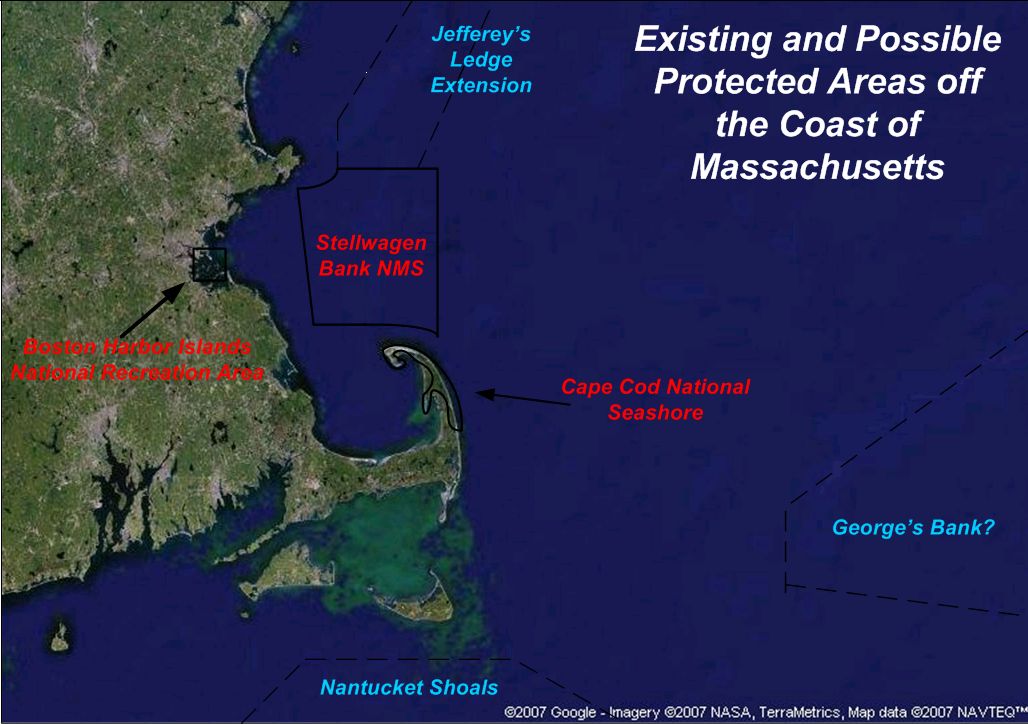|
|
Selecting Locations for the Reserves
Given the conservative 10% target for coverage, clear thought must be given to maximizing the influence of each protected unit of ocean. We again emphasize that it is not the size of individual sanctuaries that is the most important matter, but rather the global scale of coverage (Guenétte et al., 2003).
There are several general principles that should be followed when selecting locations for marine reserves. To properly function as a buffer against external exploitation, the 10% of ocean area must include a globally representative sample of habitats and ecosystems (Ballantine 1991). Particular emphasis should be placed on protecting especially fragile, unique, or threatened ecosystems. Furthermore, when possible, multiple, discrete examples of each habitat type should be protected to insure against localized disturbances. Finally, individual marine reserves should be set up in mutually reinforcing networks to maximize their collective influence. The proper layout of such systems relies heavily on accurate knowledge of the physical processes in a given area, especially the activity of advective and convective current systems, and the biological responses to such physical factors (Johnson, Funicelli, & Bohnsack 1999 and Ballantine 1991). As such, continual refinement of such data through future research is very important to effective placement of the marine reserves.
Although the no-take zones in this proposal are intended to primarily target entire ecosystems, we acknowledge that there are biological or economic situations in which a certain species is of particular importance. In such cases, a thorough understanding of the relevant biology and ecology is critically important. For example, a very mobile fish population would have a faster biomass exchange rate through a marine reserve, rendering it less effective than it would be for a less mobile species. As such, no-take zones are best placed along the axis of movement for given populations. This configuration maximizes the time the fish will remain within the reserve and hence the protective effect. (Watson, Alder, Walters, 2000)
Further difficulties arise when marine reserves are used to protect highly migratory species. It would be inefficient and controversial to try to place a reserve over the entire migration path of a population. One possibility is a configuration that targets key life states and/or migratory routes of the target species (Robichaud & Rose 2004). A land-based analogy is the protection of bird nesting sites and reserves for migratory birds, respectively. Another option is the implementation of dynamic protected areas. By continuously tracking indicators of fish population, such as ocean fronts, the boundaries can be changed to follow populations. However, we do acknowledge that an ever changing boundary can give rise to significant confusion. (Hyrenbach, Worm, Fonteneau, Gilman, 2007)
Different levels of restriction outside of the no-take zone can solve the problem of species within the same area requiring different levels of protection. This method has been used in existing MPAs to place the strictest restrictions on the areas inhabited by the most threatened populations (Marine 2007). Such "zoning" can be distributed in any spatial dimension. One particular method involves so-called "vertical zoning." Vertical zoning allows the protection of target species that live in a particular depth of the ocean without completely halting fisheries in that area. These can be particularly useful when protecting life on the ocean floor from particular destructive methods of fishing such as trawling. (U.S. 2006)
When setting up marine reserves, it is also important to consider potential ecological or physical barriers that will prevent the occurrence of spillover, and thereby reduce the ability of the protected area to enhance adjacent fisheries. For instance, one study in the Turks and Caicos Islands found that numerous shallow sand habitats enclosed a population of conch, reducing its spillover into nearby areas (A. Tewfik and C. Bene, 2003).
This vast array of considerations can seem daunting. The optimal layout of marine reserves must consider numerous biological, physical, and social factors, as well as the very practical issues of cost and enforceability. Fortunately, there exist several sophisticated environmental modeling packages such as Marxan (Possingham, Ball, & Andleman 2000), ResNet, and C-Plan that use stochastic statistical methods to optimize these many parameters. Naturally, these types of algorithms are only as good as the input data put into them, so continued emphasis on the collection of scientific data is essential to the optimal design, and hence eventual success of marine reserves.

Figure 1. Graphic depicting possible marine protected areas, map data courtesy of Google Maps.
For more on oceanographic research
Next: management and enforcement

